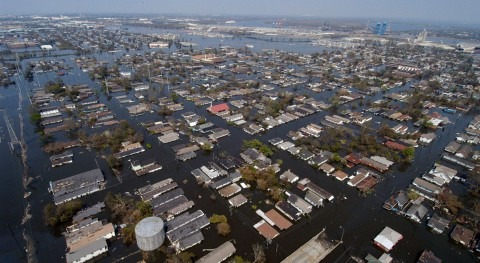Nearly half of the PFAS “forever chemicals” present in drinking water samples are not monitored by the U.S. Environmental Protection Agency (EPA), according to a peer-reviewed analysis conducted by NRDC (Natural Resources Defense Council) and community members in 16 states. Furthermore, half the study’s contaminated samples exceeded EPA’s drinking water standards for six PFAS chemicals proposed last month. The study predicts that ongoing national monitoring programs will significantly underreport the presence of the toxic chemicals in drinking water.
“Current methods for testing and responding to PFAS in drinking water are insufficient to protect people from toxic ‘forever chemical’ pollution,” said Anna Reade, Senior Scientist at NRDC. “The dangers of PFAS chemicals continue to be unearthed faster than scientists, policymakers, and producers can manage and it’s time for urgent action. We must manage PFAS as a class and stop its ongoing production.”
It is estimated there are at least 14,000 PFAS chemicals in existence, of which hundreds are likely in commercial use. By the EPA’s own estimate, a population of 70-94 million people are served by systems impacted by its proposed regulation of just six PFAS chemicals.
“Testing in North Carolina found the highest levels of PFAS that are unmonitored by the EPA and whose health effects are largely unknown,” said Emily Donovan, Co-founder of Clean Cape Fear. “While the PFAS regulations proposed by EPA last month are a good start, we demand a whole-of-government approach to stop all PFAS exposures. Our basic human rights are under attack. Communities like mine will no longer sit by as our children’s lives and our hopes for a healthy future are stolen by the greedy and irresponsible chemical industry.”
Key findings reported in the journal Science of the Total Environment include:
- Four communities in the study (Richmond, Texas; Fairbanks, Alaska; Portsmouth, New Hampshire; Houston, Texas) have more than 45 parts per trillion of total PFAS in their supply but would not trigger EPA’s proposed standards and therefore would not qualify for drinking water protections.
- The highest concentrations of PFAS were found in Maine, North Carolina, Colorado, and Texas.
- The highest levels of unmonitored PFAS were found in North Carolina.
- PFAS were found in 30 of 44 samples tested. There were 26 unique PFAS detected in the samples, including 12 not covered by current EPA testing methods.
- All samples with PFAS detected had at least one PFAS that would not be captured by the national monitoring program.
- PFPrA, an ultrashort chain PFAS, was the most common PFAS present and was often found at the highest concentration, but EPA does not monitor this chemical and little is known about its health impacts.
- Samples were tested for 70 PFAS by the commercial laboratory Eurofins Environment Testing. This includes an additional 41 PFAS not currently covered in EPA’s methods.
- Samples were collected from: Alaska, Alabama, Arizona, California, Colorado, Florida, Louisiana, Massachusetts, Maine, Michigan, Minnesota, North Carolina, New Hampshire, Oregon, South Carolina, and Texas.
These findings underscore the importance and urgency of evolving EPA’s testing methods to more accurately identify and protect communities impacted by PFAS pollution and the need to issue more comprehensive drinking water standards as quickly as possible.
“Residents deserve to know if their drinking water is contaminated by these toxic ‘forever chemicals,’” said Erik Olson, Senior Strategic Director at NRDC. “Policies attempting to manage only a handful of PFAS, like PFOA and PFOS which have already been largely phased out of the market, do not reflect real-life contamination. These policies leave communities responsible for cleaning-up the mess. We need evolved solutions to better track PFAS pollution and hold polluters accountable.”
Recommendations for action include:
- Pass federal legislation to better prevent, monitor, track, and address PFAS contamination, as a class.
- Finalize the 6 recently-proposed PFAS in drinking water standards as soon as possible, and quickly issue a comprehensive drinking water standard for PFAS as a class.
- Ban all non-essential uses of PFAS chemicals as quickly as possible.
- Hold polluters accountable for contamination and responsible for treating contaminated drinking water.
- Set a moratorium on approving new PFAS chemicals for use and on expansion of PFAS production at chemical facilities.
- Expand its testing methodology so all communities can better understand their exposure to these toxic, “forever” chemicals.
- Use a science-based, broad definition for PFAS that aligns with international, health, and scientific communities.

















